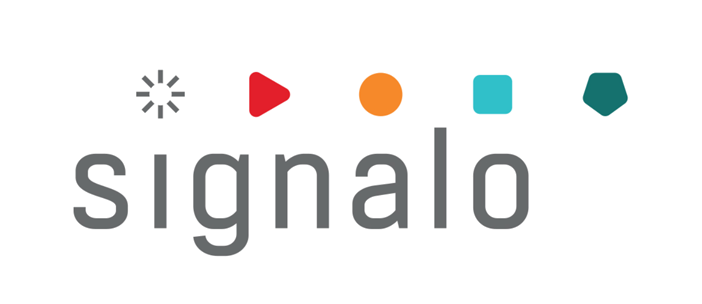Production capacity
Best Practices for Managing and Optimizing Production Capacity
With the ever-increasing expectations of customers for faster delivery times and higher product quality, companies are constantly striving to enhance their production capacity to gain a competitive edge.
The significance of production capacity optimization cannot be overstated. It allows businesses to meet the growing demand for their products while minimizing costs and maintaining high levels of customer satisfaction. By leveraging production capacity effectively, companies can streamline their operations, reduce lead times, and ensure timely delivery, thus gaining a significant advantage in the market.
The challenges
Companies often face a multitude of hurdles that hinder their ability to fully exploit their production potential. Some common challenges include inadequate resources, inefficient production processes, bottlenecks, lack of visibility and coordination across departments, and rapidly changing customer demands.
Optimizing production capacity
In this article, we will explore the best practices for managing and optimizing production capacity. By addressing these challenges head-on and implementing effective strategies, companies can overcome obstacles and unlock their full production potential. We will delve into topics such as resource allocation, process optimization, bottleneck identification and mitigation, cross-functional collaboration, and demand forecasting. By understanding and implementing these best practices, companies can improve their production capacity management, enhance operational efficiency, and ultimately drive profitability and customer satisfaction.
What is a production capacity

Production capacity refers to the maximum output or volume of products that a company can produce within a given time, using its available resources. Efficient management and optimization of production capacity play a vital role in meeting delivery targets and satisfying customer expectations.
Understanding production capacity
The first step in understanding production capacity is to identify the resources involved in the production process, such as machinery, equipment, labor, and raw materials. These resources contribute to the overall capacity of the manufacturing facility. By leveraging these resources effectively, a company can enhance operational efficiency, minimize costs, and maximize profits.
Meeting delivery targets is paramount for customer satisfaction. When a company maintains an optimal production capacity, it ensures that orders are fulfilled within the agreed-upon timeframe.
What does customer want?
Customer expectations also play a significant role in defining production capacity. Customers expect high-quality products and timely delivery. If a company fails to meet these expectations, it may lose customers to competitors who can offer better performance. Thus, optimizing production capacity enables companies to fulfill customer demands efficiently, improving customer satisfaction and loyalty.
Cost reduction
Effective production capacity management leads to cost reduction. Companies can avoid excessive overtime expenses or over-reliance on outsourcing when they optimize their existing resources. By utilizing the available resources to their maximum potential, businesses can achieve economies of scale, reduce overheads, and increase profitability.
The consequences of poor production capacity management
Poor management and optimization of production capacity can lead to various negative consequences for manufacturing companies. These repercussions not only affect the efficiency and profitability of the business but also impact customer satisfaction and the company’s overall reputation.
Missed delivery deadlines
If a company fails to optimize its production capacity, it may struggle to fulfill orders within the promised timeframe. This can result in dissatisfied customers who may choose to switch to more reliable competitors. Missed delivery deadlines not only affect customer loyalty but also create a negative reputation for the company in the market.
Increased costs
When resources are not optimized, companies may end up incurring unnecessary expenses. For instance, over-utilization of machinery (CMMS) or excessive overtime for workers can lead to higher operational costs. Additionally, poor planning and scheduling can result in production bottlenecks, causing delays and inefficiencies that increase costs further.
Dissatisfied customers
When a company fails to meet delivery targets or provide products of expected quality, customers become frustrated and unhappy. Dissatisfaction can lead to a loss of repeat business and negative word-of-mouth publicity, which can harm the company’s reputation in the long run. Customers have high expectations and demand consistent performance from the companies they choose to engage with.
Potential revenue loss
Missed delivery deadlines, increased costs, and dissatisfied customers can all directly impact a company’s bottom line. When customers are not satisfied with the product or service they receive, they may seek alternatives, resulting in lost sales and reduced revenue. Moreover, the negative reputation generated by poor production capacity management can deter potential customers from choosing the company altogether.
Best Practices for Managing and Optimizing Production Capacity
Proven Strategies for Managing Production Capacity
Accurately estimating future demand is a critical aspect of managing production capacity. Forecasting techniques play an important role in helping companies align their production accordingly. By analyzing historical data, market trends, and customer preferences, businesses can make informed decisions about capacity planning. These insights enable companies to match their production capabilities with expected demand levels, avoiding both overproduction and underutilization of resources.
The use of historical data analysis and market research allows businesses to identify patterns and anticipate fluctuations in demand accurately. By identifying seasonal trends or cyclical variations, companies can adjust their production plans accordingly and avoid unnecessary costs or product shortages. This approach ensures a smooth production process and enables companies to meet customer demands promptly.
Effective Methods to Optimize Production Capacity
Optimizing production capacity is equally important for businesses seeking to maximize efficiency. Implementing lean manufacturing principles and techniques such as just-in-time (JIT) inventory management can significantly improve production efficiency. The lean approach focuses on eliminating waste, reducing lead times, and improving overall productivity. By adopting JIT inventory management, companies can minimize inventory carrying costs while ensuring the availability of materials and components when needed. This reduces the risk of overstocking or stockouts, enabling companies to meet customer demands promptly and reduce production downtime.
Automation and advanced technologies
Automation streamlines production processes by eliminating manual tasks and reducing human error. Automated systems can perform repetitive tasks with precision, increasing production speed and reducing cycle times. Additionally, advanced technologies such as robotics and artificial intelligence can further enhance production efficiency by enabling real-time monitoring, predictive maintenance, and adaptive manufacturing processes. These technologies minimize downtime and ensure optimal utilization of production capacity.
The CMMS system and Forkfleet
Equipment Maintenance
The CMMS system allows for effective management of equipment maintenance schedules and tasks. It helps in scheduling regular preventive maintenance, tracking equipment performance, and generating work orders for repairs and inspections. By proactively addressing maintenance needs, potential breakdowns and unplanned downtime can be minimized, thus maximizing the utilization of production capacity.
Real-time Monitoring and Data Analysis
Forkfleet, being an IT system for forklifts, enables real-time monitoring of the fleet’s operations. It provides data on each forklift’s working hours, tasks performed, and individual productivity. This information can be analyzed to identify any performance bottlenecks, operational inefficiencies, or patterns leading to downtime. With this knowledge, steps can be taken to optimize workflow, improve task allocation, and make informed decisions to ensure the optimal utilization of production capacity.
Task Assignment and Tracking
Forkfleet assists in task distribution among forklift operators. It ensures that the right tasks are assigned to the appropriate operators based on their availability. By efficiently allocating tasks, idle times and delays can be reduced, enabling productive utilization of the workforce. Additionally, the system tracks the progress of each task, providing real-time visibility of ongoing operations. This helps in identifying any delays or issues that might lead to downtime and allows for prompt action to minimize such occurrences.
Predictive Maintenance
The integration of CMMS with Forkfleet can enable predictive maintenance capabilities. By analyzing historical data and equipment performance trends, the system can identify patterns indicating potential equipment failures or maintenance requirements. This allows for proactive planning and scheduling of maintenance activities before a breakdown occurs. Predictive maintenance reduces unscheduled downtime and helps maintain the production capacity at an optimal level.
The CMMS system and Forkfleet, with their equipment maintenance capabilities, real-time monitoring, task assignment, and predictive maintenance features, enable proactive maintenance, efficient task allocation, and timely identification and resolution of issues, leading to improved productivity and reduced downtime.
The Cluer system
Cluer, as an employee suggestion collection system, can have a significant impact on ensuring optimal utilization of production capacity. By allowing employees to provide suggestions and ideas, the system promotes a culture of continuous improvement and innovation.
Increased Efficiency
The Cluer system enables employees to propose suggestions that can enhance operational processes, eliminate waste, and improve productivity. Through this platform, employees can share their insights on how to maximize production capacity and streamline workflows, leading to increased efficiency in the organization.
Employee Engagement
Engaged employees are more likely to contribute their best efforts towards achieving organizational goals. The Cluer system encourages active employee participation and involvement in the decision-making process by soliciting their suggestions. This engagement fosters a sense of ownership and responsibility for optimizing production capacity.
Identification of Bottlenecks
Employees, being directly involved in the production process, often have valuable insights into identifying bottlenecks or constraints that hinder optimal utilization of capacity. The Cluer system enables them to raise awareness about these issues and propose potential solutions, helping management address and resolve them timely.
Knowledge Sharing
The Cluer system facilitates the exchange of ideas and knowledge among employees. By encouraging cross-departmental collaboration, different teams can share insights on how to optimize production capacity based on their specific expertise. This sharing of knowledge leads to better utilization of available resources and improved production outcomes.
Continuous Improvement
The Cluer system creates a feedback loop for ongoing improvement initiatives. As employees submit suggestions and provide feedback on the implementation of previous suggestions, the system enables organizations to gauge the effectiveness of implemented changes and make iterative improvements. This iterative approach supports the continuous improvement of production capacity utilization.
The Cluer system empowers employees to contribute their ideas and suggestions, fostering a culture of innovation and engagement. Through this process, the system helps organizations identify, address, and improve upon factors that affect the optimal utilization of production capacity.
The success story of efficient production capacity management
The story from in the United States is the case of Ford Motor Company during World War II.
In the early 1940s, the U.S. government approached Ford to help with producing military equipment for the war effort. At that time, Ford had already established itself as a leading automobile manufacturer but had little experience in producing military vehicles and weapons.
Strategic moves
Rather than building new factories or expanding existing ones, Ford decided to leverage its existing production capacity and make innovative changes to optimize efficiency. The company implemented a groundbreaking manufacturing technique known as “the assembly line” under the guidance of Henry Ford.
By adopting a highly efficient production system, Ford was able to produce large quantities of military equipment, including tanks, airplanes, jeeps, and munitions, in record time. This approach enabled the company to fulfill the government’s requirements and contribute significantly to the war effort.
Key factors of success
Ford’s success in managing its production capacity efficiently can be attributed to several key factors. Firstly, the company made effective use of standardized parts, which reduced the need for customization and increased production speed. Secondly, they implemented a comprehensive training program for workers, ensuring they were skilled in their specific tasks, thus minimizing errors and maximizing output. Lastly, Ford optimized logistics and supply chain management, ensuring a smooth flow of raw materials and finished products between different stages of production.
Influence
Thanks to these efficient production capacity management strategies, Ford played a pivotal role in supporting the war effort and gained a reputation for reliability and productivity. This success not only solidified Ford’s position as a leading industrial powerhouse in the United States but also revolutionized manufacturing practices worldwide.
The story of Ford’s efficient production capacity management during World War II serves as an inspiration for businesses aiming to optimize their production capabilities. It highlights the importance of leveraging existing resources, implementing innovative techniques, and focusing on continuous improvement to achieve outstanding results.
Steps to implement effective production capacity management
Regular capacity assessments
Conducting regular capacity assessments is necessary to identify bottlenecks and areas for improvement within the production process. By analyzing current production levels and comparing them to projected demands, companies can proactively address any gaps in capacity. These assessments can be done using various tools and techniques, including process mapping, data analysis, and collaboration with cross-functional teams. The insights gained from these assessments can inform decision-making and aid in the development of strategies to optimize production capacity.
Comprehensive workforce training programs
Enhancing employee skills and knowledge is vital for supporting efficient utilization of available resources. Investing in comprehensive workforce training programs can help employees develop a deep understanding of the production process, enabling them to identify opportunities for improvement and propose innovative solutions. By empowering employees with the necessary skills, companies can foster a culture of continuous improvement and ensure that resources are effectively utilized.
Call to action
By prioritizing production capacity management, firms can gain a competitive edge in the market and improve their bottom line.
It is crucial for businesses to take immediate action and start implementing the discussed best practices. Waiting too long to optimize production capacity may result in missed opportunities and increased operational inefficiencies. Companies should encourage collaboration across departments and solicit input from employees at all levels to ensure successful implementation.
Conclusion
By following these best practices, organizations can reap numerous benefits. Increased profitability is one major advantage, as optimal production capacity ensures that organizations can meet customer demands without excessive inventory buildup or costly rushed production. This leads to enhanced cost control, improved financial performance, and overall organizational growth.
Customer satisfaction is another significant outcome of effective capacity management. By aligning production capacity with customer expectations, organizations can ensure timely delivery, minimize order backlogs, and provide exceptional service. This not only boosts customer loyalty but also attracts new customers, establishing a favorable reputation in the market.
Only through continuous analysis, adaptation, and innovation can organizations ensure long-term sustainability and maintain a competitive advantage.
Production capacity - pdf
Use the Checklist for Evaluating Production Capacity Constraints to identify areas for improvement. Our guidelines will enable you to conduct a detailed analysis and draw conclusions. By following them, you will implement effective strategies that enhance efficiency and production capacity.


Manufacturing software
IT Systems
What challenge would you like to tackle?

- Optimization of internal logistics
- Recalls of production sockets
- Messages from machines
- Monitoring electricity, water, gas, temperature, humidity, and vibrations
- Streamlining production
- Management and control of tool distribution
- Managing employee skills
- Collecting employee ideas for improvements
- Digital safety workplace instructions
- Improving safety
Values
Discover the benefits of collaboration
We offer a free consultation as the first step of collaboration, allowing you to familiarize yourself with our approach and verify our advisory competencies. This way, even before making a decision, you’ll feel that your situation and problem have been well understood, and the proposed solution will be optimally tailored to your company’s situation.
Our services (support) are included in a subscription, which does not generate hidden costs. The subscription-based billing allows for a significant reduction in the entry threshold into the system and enables immediate testing.
We are communicationally independent – we can develop our system without depending on the client’s IT department. We do not generate additional work for the client’s IT department. This way, we lower the implementation risk and associated costs. The possibility of quicker implementation of the solution results in faster return on investment.
Login to our applications is secured at a high level, characteristic of banking solutions. At the same time, the login process is intuitive. Your data is as secure as in a bank thanks to our system.
We offer multilingualism in our solutions through real-time translation—each employee operates applications in their native language. This enhances efficiency and reduces costs by expanding the potential labor market and eliminating the need to hire translators.
Our software features an interface optimized for quick, easy, and intuitive use, even by digitally excluded or poorly skilled employees. This means real-time savings in both time and training costs for your workforce in using the new software. The ability for rapid deployment of software for use results in a shorter transition/implementation period.














